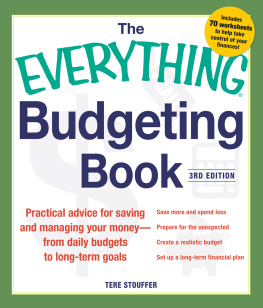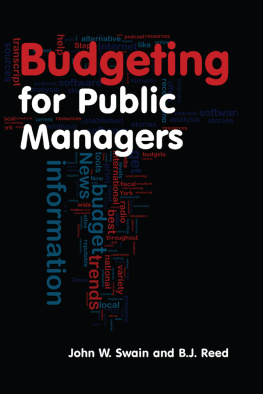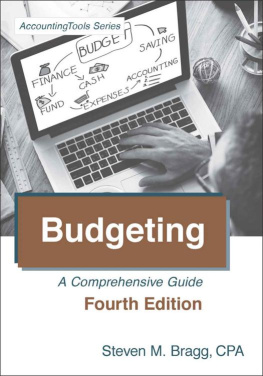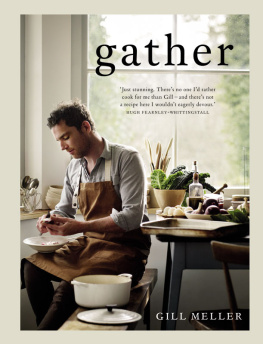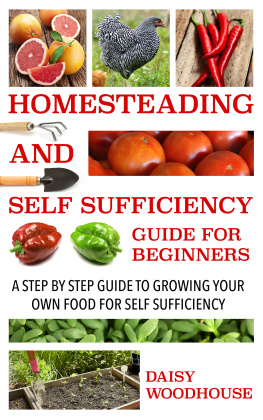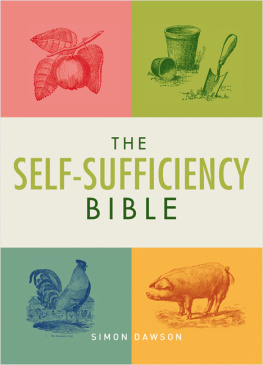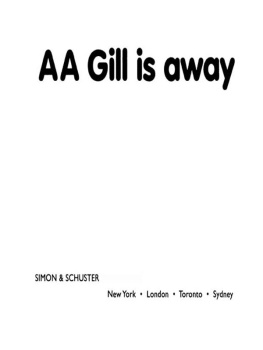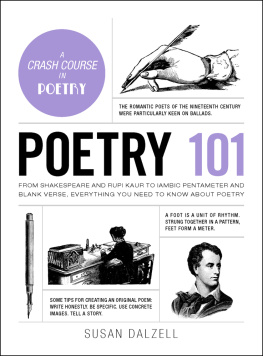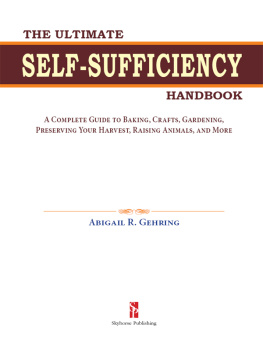Gill Govier - How to live on less: a guide to everyday budgeting and self-sufficiency
Here you can read online Gill Govier - How to live on less: a guide to everyday budgeting and self-sufficiency full text of the book (entire story) in english for free. Download pdf and epub, get meaning, cover and reviews about this ebook. year: 2009, publisher: W & H Publishing, genre: Home and family. Description of the work, (preface) as well as reviews are available. Best literature library LitArk.com created for fans of good reading and offers a wide selection of genres:
Romance novel
Science fiction
Adventure
Detective
Science
History
Home and family
Prose
Art
Politics
Computer
Non-fiction
Religion
Business
Children
Humor
Choose a favorite category and find really read worthwhile books. Enjoy immersion in the world of imagination, feel the emotions of the characters or learn something new for yourself, make an fascinating discovery.

- Book:How to live on less: a guide to everyday budgeting and self-sufficiency
- Author:
- Publisher:W & H Publishing
- Genre:
- Year:2009
- Rating:4 / 5
- Favourites:Add to favourites
- Your mark:
- 80
- 1
- 2
- 3
- 4
- 5
How to live on less: a guide to everyday budgeting and self-sufficiency: summary, description and annotation
We offer to read an annotation, description, summary or preface (depends on what the author of the book "How to live on less: a guide to everyday budgeting and self-sufficiency" wrote himself). If you haven't found the necessary information about the book — write in the comments, we will try to find it.
Gill Govier: author's other books
Who wrote How to live on less: a guide to everyday budgeting and self-sufficiency? Find out the surname, the name of the author of the book and a list of all author's works by series.
How to live on less: a guide to everyday budgeting and self-sufficiency — read online for free the complete book (whole text) full work
Below is the text of the book, divided by pages. System saving the place of the last page read, allows you to conveniently read the book "How to live on less: a guide to everyday budgeting and self-sufficiency" online for free, without having to search again every time where you left off. Put a bookmark, and you can go to the page where you finished reading at any time.
Font size:
Interval:
Bookmark:
Title Page
HOW TO LIVE ON LESS
A Guide to Everyday Budgeting and Self-sufficiency
Gill Govier
Publisher Information
First published in 2012 by
W & H Publishing
Apple Tree Cottage, Inlands Road, Nutbourne,
PO18 8RJ
Digital edition converted and published by
Andrews UK Limited 2012
www.andrewsuk.com
Copyright 2012 by W & H Publishing. All rights reserved. No part of this work may be disclosed to any third party, translated, reproduced, copied or disseminated in any form or by any means except as defined in the contract or with the written permission of Gill Govier Ltd., Pulters Farm, Hinxworth Place, Hinxworth, Herts SG7 5HB, UK. Email: gill@govieronline.co.uk
Acknowledgements
I should like to thank all my friends and family for the support and encouragement given to me while researching for this book, and particularly the following friends who provided specialist knowledge and introduced me to new friends and neighbours who have already taken a key step towards self-sufficiency:
Caroline and Terry Alderton, Gill Bacon, Chris and Carme Boswell, Marian and Pete Bracey, Linda Cohen, Richard Cowell, Piers Cunningham, Munira Grainger, Rhoda Long, Briony and Reg Marjason, Gill and Ahmet Mehmet, Ruy and Paula Pinto, Emma Pitrakou, Lyn Powis.
British Library Cataloguing in Publication Data
A CIP record for this book is available from the British Library
.....delivering today; planning tomorrow
Introduction
How to Live on Less is about taking a new and exciting look at financing our everyday life and the ways in which we can achieve the same, or similar, for less. Just because we want to economise doesnt mean resorting to penny-pinching or drastically reducing our quality of life in order to afford what we want. Its about understanding our spending patterns, learning new habits and taking advantage of a range of smarter, cheaper ways of sourcing, acquiring and using those products we need or desire.
Reducing expenditure and waste falls broadly into two main areas:
- Everyday Budgeting: setting and sticking to realistic, achievable targets, whether in energy or fuel consumption, spending capital or cash, feeding the family, etc.
- Self-sufficiency: the ability to produce some or all of what we use and consume
Several themes are used throughout the book to illustrate How to Live on Less:
- making simple economies, e.g. turning off lights, swapping to a cheaper insurance, using the car less or driving more efficiently
- finding a way to acquire the same for less, e.g. using a discount voucher, paying by direct debit, bartering goods and services
- developing new habits, e.g. cooking from scratch, using the Internet, developing a practical new craft or skill
- changing lifestyle, e.g. producing our own fruit and vegetables, raising livestock, ditching the car
Everyday Budgeting
The objective of this book is to provide a broad range of ideas to help you live on less. By this I mean achieving one, some or all of the following:
- spending less
- consuming/using less
- making what we already have go further
- reusing or recycling items
- potentially, finding incremental income just by using our skills and sweating our assets
- taking a step towards self-sufficiency (see later)
You probably wont be able to achieve each of these ideas in every area of your life. For example, it would be difficult to spend less on your mortgage without causing a few alarm bells to ring with your lender! But you could have your home earn you extra income if you are prepared to rent out a spare room or possibly share your garden.
The aim throughout the book is to present a set of easy-to-use mechanisms which will help you reduce the final cost of what you want to acquire without compromising on quality. Not all techniques work for all scenarios, so I suggest you familiarise yourself with each of the tools identified in the toolkit to apply the most appropriate technique to each individual purchase.
Self-sufficiency
True self-sufficiency - the ability to supply all our energy needs, feed the family, keep ourselves clean and healthy and potentially derive income from products that we make ourselves - may well be beyond the capability, even interest, of many of us. The BBC sitcom of the 70s The Good Life portrayed one couples attempts at such a life in a light-hearted way, but nevertheless also showed just how difficult and time-consuming (yet ultimately rewarding) it would be to achieve full self-sufficiency.
How to Live on Less presents some practical steps a town-based family can take towards a self-sufficient lifestyle. It does not necessarily involve turning your back garden into a pigsty - unless, of course, you have the space and the desire to rear pigs for bacon, pork or breeding, in which case turn to the Livestock section to get started. But it does involve considering small, incremental changes to the way we live, understanding how we use (and waste) energy, and what foodstuffs we could easily grow or forage for ourselves.
How to Live on Less
Each chapter is dedicated to a different theme; for example, Energy, Home and Leisure, Food and Drink. As I prepared the content of this book, I had a set of criteria in mind to determine whether it would be possible to live on less without substantially changing quality of life, or indeed to become self-sufficient, either fully or partly, in the supply of each commodity:
- Am I taking advantage of all the modern tools and techniques of acquiring what I need - online shopping, discount vouchers, trading, timing?
- Is it possible to replace my current supply (of electricity, eggs, bath oil, etc.) with something of at least equal quality that I have produced myself? If yes, how much investment do I need to make of my time and money, and how long will it take to pay for itself?
- Would it be possible to derive any income from surplus produced as a result of my self-sufficiency efforts or from goods and services that I can provide?
- If I choose not to replace my current supply, for whatever reason, can I reduce what I currently purchase without significantly altering my quality of life so that I have more disposable income - thus instantly living on less or providing the funds to invest in one of the self-sufficiency projects?
- Finally, where replacement or reduction are not feasible or cost-effective options, is there the possibility to reuse or recycle resources to keep waste to a minimum and dispose of what I no longer want sensibly and sensitively?
Time to Break Even
I have attempted in several sections to give some guidance on how much a particular change of habit or self-sufficiency venture might cost, what savings can be made over current-day expenditure, and any income the activity could potentially generate. In doing so, I have introduced the concept of Time to Break Even.
The Time to Break Even is the amount of time it takes for the cost of an investment to be repaid through savings in bills or income from sale of products. Once the Time to Break Even has elapsed, all savings or income, are effectively profit.
As an example, I have provided a simple estimate in the Beekeeping section that one hive plus all its paraphernalia will probably cost around 300 up front. However, the hive should generate around 27 kg (60 lb) of honey each year, which we could arbitrarily divide between, say, 2 kg for your own use and 25 kg (i.e. fifty 500 g jars) to sell. Ignoring for the moment the effects of inflation, if you could then sell 500 g (just over 1 lb) at 3 per jar, you would generate (25 kg / 500 g) * 3 = 150 per year, making the Time to Break Even 300 / 150 = 2 years. After the two years, the 150 becomes pure profit.
Next pageFont size:
Interval:
Bookmark:
Similar books «How to live on less: a guide to everyday budgeting and self-sufficiency»
Look at similar books to How to live on less: a guide to everyday budgeting and self-sufficiency. We have selected literature similar in name and meaning in the hope of providing readers with more options to find new, interesting, not yet read works.
Discussion, reviews of the book How to live on less: a guide to everyday budgeting and self-sufficiency and just readers' own opinions. Leave your comments, write what you think about the work, its meaning or the main characters. Specify what exactly you liked and what you didn't like, and why you think so.

